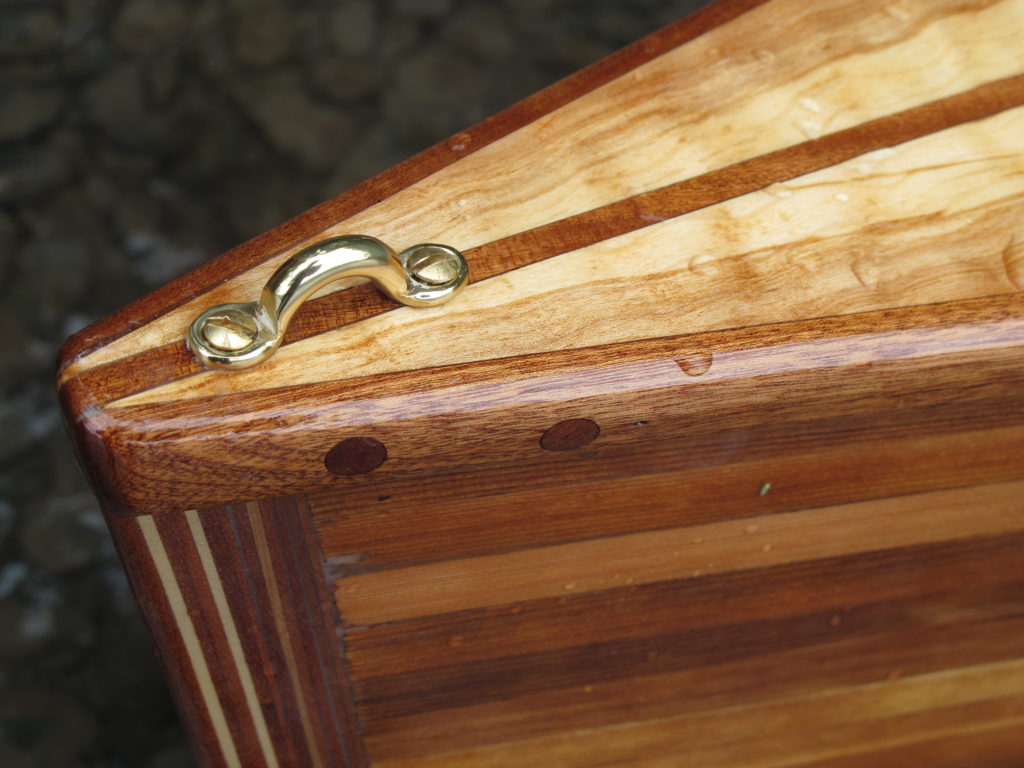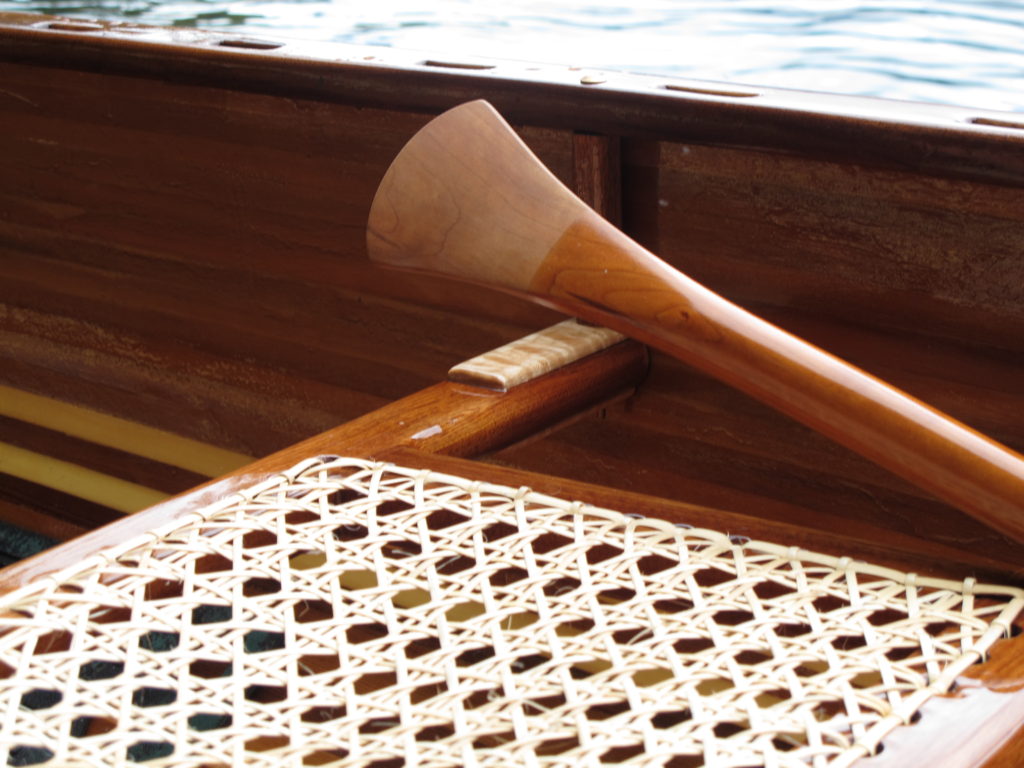Over the Labor Day 2015 weekend, my husband and I finally launched the 18-foot cedar-strip canoe* we built in our garage. Family and friends gathered at La Poel, on Washington’s Lake Crescent, and we celebrated the end of one journey and the beginning of another. People took turns paddling, the canoe’s finish got its first scratches, and the boat stayed right side up.
It was exhilarating–and it was a profound relief to see the thing actually float–but the pretty pictures are never the whole story.
This was not a practical enterprise, in terms of either time or money. This project was far beyond our skill level, and it tested our resolve many times during the four years it took to turn raw lumber into a finished boat. We owe a profound debt of gratitude to those without whose help it would not have been possible.
We started this project in September of 2011, still relative newlyweds and still relatively new to Washington. Over the four years we spent working on the project, we changed and grew, started new careers, and experienced joy and heartbreak, as one does throughout the course of living. And still the canoe sat in the garage, an unfinished project on which hung so many unfulfilled plans. There were times I could hardly bear to look at it because it seemed such an impossible project.
And yet we had to finish it, because this was one project in which sunk costs did matter, greatly.
The friend whose idea this was, the one who talked us into this crazy plan, has many sayings about boats and boatbuilding. One is that perfection is driven by fear, while beauty is inspired by love. We aim, therefore, to build beautiful rather than perfect boats. Another is that boatbuilding is all about the process.
He is also, as you might imagine, an extremely optimistic person.
Although our boat is rather more beautiful than perfect, I confess that I didn’t always grasp the beauty of the process. It would have been easier–and far cheaper–to have gone to REI and bought a boat.
But suspended above the turquoise waters of Lake Crescent in a boat we’d made, I started to get it. We had questioned whether the project was worth the stress, but “Was it worth it?” is very much the wrong question to ask.

We began this project on a romantic whim and saw it though with grit, guilt, and a healthy dose of humility. We do these kinds of impractical, beautiful things not because they are “worth it” in any kind of quantifiable way but because they bind us more deeply to life. Building this boat was an investment in relationships, in summer days spent with my parents, in conversations around dining room tables, over email and phone calls and with many, many frantic last-minute questions. It was also an investment in ourselves, in the way we see ourselves and the stories we’ll tell about our life over the years.
As improbable as it may seem, we are now the kind of people who built a boat in our garage.
Launching the canoe didn’t make me instantly bolder or braver or less neurotic, but building that boat did reward my faith in the process, that sometimes fumbling in the direction of beauty really is worth it, even when you can’t yet imagine what you’re grasping at.

*We used the plans for the Freedom 17’9 from Bear Mountain Boats, but ended up with a slightly longer boat due to some, ahem, challenges in aligning the stems with the hull. Nick Offerman we are not. If you’re building a boat, Canoecraft is awesome. Take it from us: You should probably check it out earlier in the process rather than later.
And oh, those hand-caned seats. Yes, I did it myself. I must have watched this video from YouTube at least 20 times. The first seat took me about 8 hours, but the second was thankfully much faster.
Other resources:
EdenSaw in Port Townsend, Washington
Inspiration from the Wooden Boat Festival, also in Port Townsend
We used System Three epoxies for the finish and ordered hardware (the seat hangers, bow and stern pad eyes, and thwart bolts) from Newfound Woodworks.
The paddles are from Shaw and Tenney in Maine and were a Christmas gift that sat unused and accusing for many years until they were finally put to good use. They are lightweight, sturdy, and entirely lovely to use.
[…] my ongoing effort to complicate, er, enrich my life by figuring out how to make things that other people simply buy at the store, I’m currently on the lookout for something […]